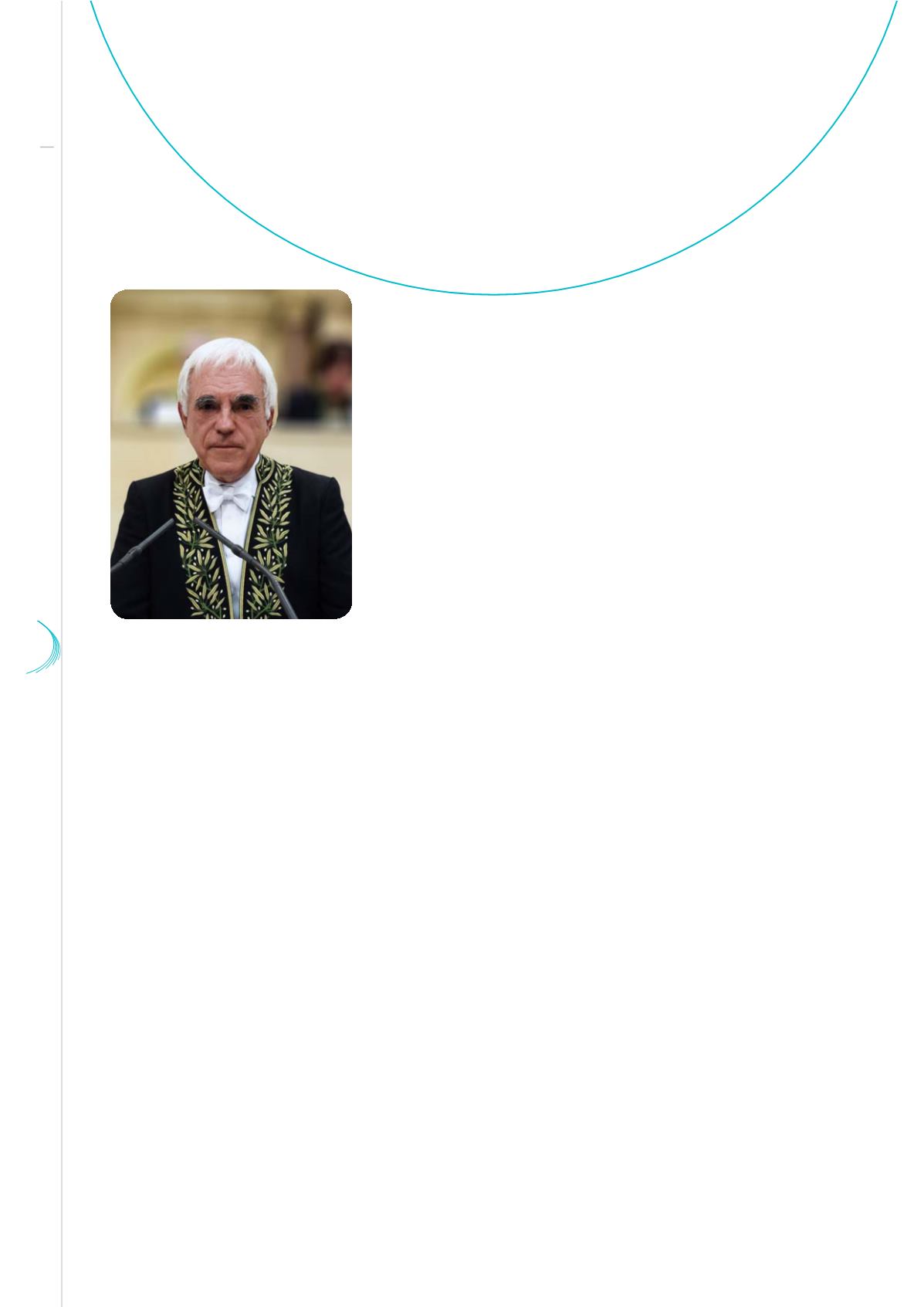

37 38
72
La Lettre
© B.Eymann - Académie des sciences
Gérard Berry
Member of the Académie des Sciences, Professor at the Collège
de France
Mechanics, applied mathematics, computer science,
control theory and signal processing: all those domains
of the
Mechanics and Computer Science Section
of the
Académie des sciences are obviously not 350 years
old. Modern applied mathematics and computer science
were only born in the 20
th
Century. Yet they are moved
by a common thought and action: the invention and
optimization of all sorts of machines that are at the core
of successive industrial revolutions, from the motor to the computer, including the train, automobile,
airplane, machine-tool, etc.
Matter and energy formed the bedrock of science and technology until the middle of the 19
th
Century.
Mechanical machines, and then electric ones, used energy to transport and work on matter, or also convert
one form of energy into another; the whole great industrial revolution that appeared in the 18
th
Century
completed the bedrock triangle and made it possible to connect men to one another without any material
support.
Until the middle of the 20
th
Century, information was not really an explicit notion, although it already played
a very central role. Progress indeed constantly built on ever more precise measurements of such natural
phenomena as the balance of forces, friction, combustion and radiation, leading to conceive better models
for nature and improve machines by means of superior architectures and plans. Measures, models,
calculations, architectures and plans all pertain to the field of information, stored and transmitted via
standard material supports such as books, blackboards and pieces of chalk. With modern computing,
information and the algorithms that manipulate it now play a much wider role, to such an extent that
we now live on a tetrahedron and not on a triangle any more. Let it be mentioned, incidentally, that the
algorithmic methods are ancient, dating further back in time than mechanics, mathematics and even
writing. The very word “algorithm” comes from the name of the great Persian scientist Al Khwārizmī, while
“algebra” derives from Al Jabr, which is the name of his treatise on solving equations through calculation.
Machines and information


















